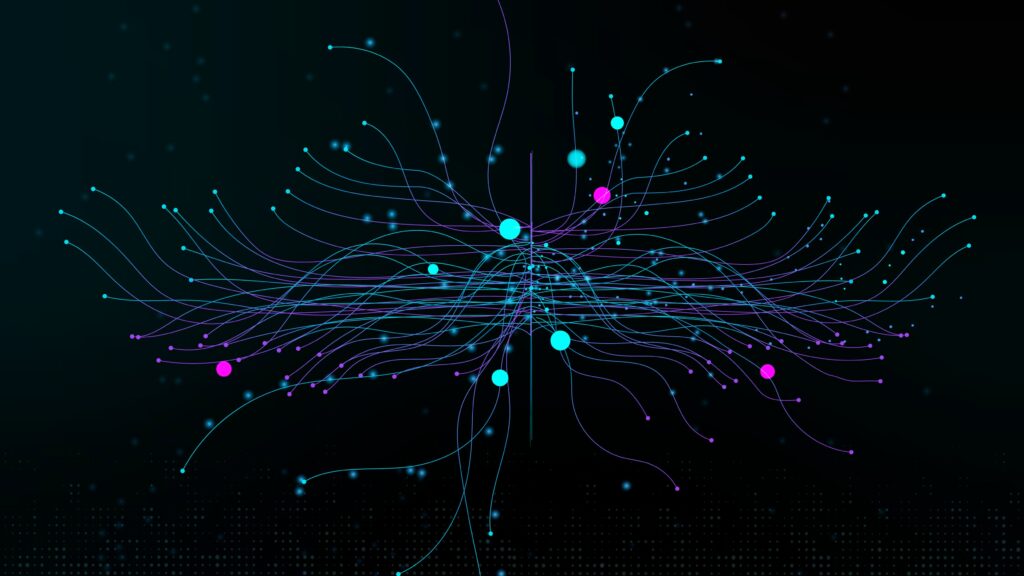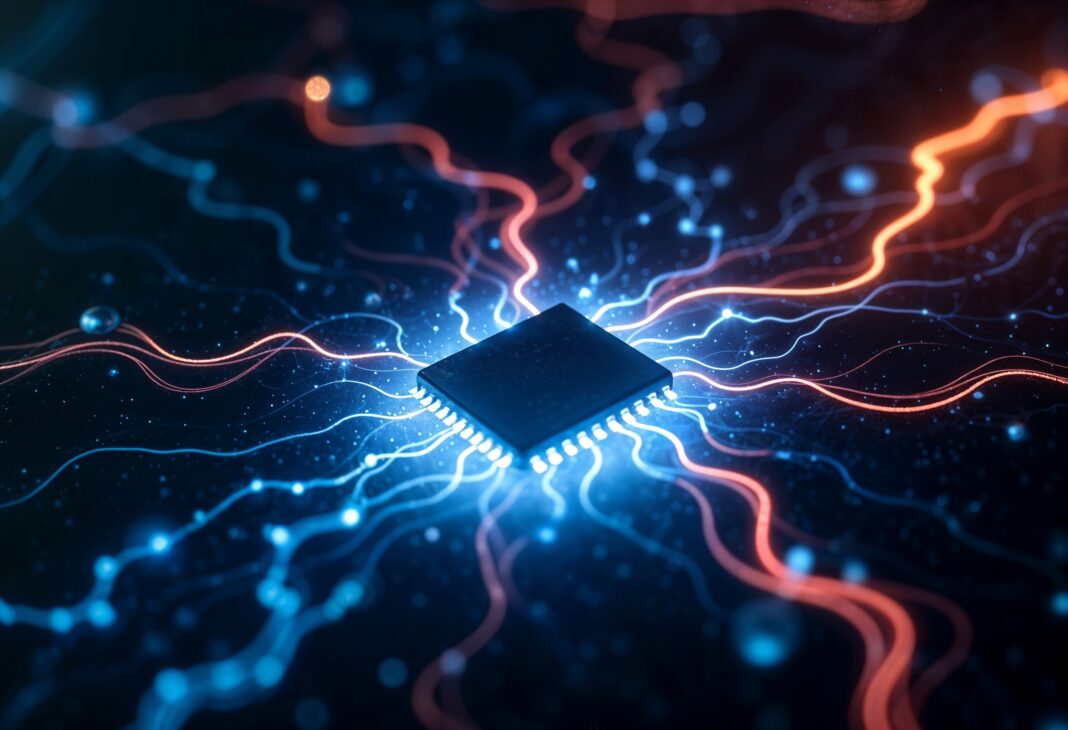Quantum computing is not just an incremental improvement over classical computing—it represents a fundamental shift in how we process information. Unlike traditional computers, which rely on binary bits (either 0 or 1), quantum computers use qubits, which can exist in superposition (both 0 and 1 simultaneously) and entanglement (instant correlation between qubits regardless of distance). This allows them to perform calculations at speeds millions of times faster than today’s most powerful supercomputers.

The implications for cybersecurity are profound. Many of the encryption methods that protect our online transactions, government secrets, and personal data today could be broken in minutes by a sufficiently powerful quantum computer. At the same time, quantum technology introduces new defense mechanisms, such as quantum key distribution (QKD) and post-quantum cryptography, which promise to make certain types of hacking impossible.
This article will explore in extreme depth how quantum computing will disrupt, enhance, and redefine cybersecurity. We will examine:
- How quantum computers work and why they threaten modern encryption
- Which encryption methods are most at risk
- Quantum-resistant cryptography: The next generation of security
- Quantum Key Distribution (QKD): The “unhackable” communication method
- Industries most vulnerable to quantum cyberattacks
- How governments and corporations are preparing
- The timeline for quantum threats and defenses
- Ethical and geopolitical implications
- FAQs on quantum computing and cybersecurity
By the end, you will understand not just the risks but also the solutions being developed to keep data safe in the quantum era.
1. How Quantum Computers Work and Why They Threaten Encryption
1.1 The Basics of Quantum Computing
Classical computers process information using bits, which are binary (either 0 or 1). Quantum computers, however, use qubits, which can be in a superposition of states—meaning they can be 0, 1, or both at the same time. This property, combined with quantum entanglement (where qubits influence each other instantaneously), allows quantum computers to perform parallel computations at an unprecedented scale.
Key Quantum Principles Affecting Cybersecurity:
- Superposition: A qubit can exist in multiple states at once, enabling massive parallelism.
- Entanglement: Linked qubits can affect each other instantly, even across vast distances.
- Quantum Interference: Enhances correct computational paths while canceling out wrong ones.
1.2 Why Quantum Computers Break Modern Encryption
Most cybersecurity today relies on public-key cryptography, such as RSA and ECC (Elliptic Curve Cryptography). These methods are based on mathematical problems that are extremely difficult for classical computers to solve—but trivial for quantum computers.
Shor’s Algorithm: The Encryption Killer
Discovered in 1994 by mathematician Peter Shor, this quantum algorithm can:
- Factor large prime numbers (breaking RSA encryption)
- Solve discrete logarithms (breaking ECC)
- Decrypt data in polynomial time (where classical computers take exponential time)
Example:
- A classical supercomputer would take thousands of years to crack a 2048-bit RSA key.
- A powerful quantum computer could do it in hours or even minutes.
Grover’s Algorithm: Speeding Up Brute-Force Attacks
While not as devastating as Shor’s, Grover’s algorithm can:
- Quadratically speed up brute-force searches (e.g., cracking passwords)
- Reduce the security of symmetric encryption (AES-256) by half (AES-128 equivalent)
This means even symmetric encryption, which is currently considered quantum-resistant, will need longer keys to remain secure.
2. Vulnerabilities in Current Cybersecurity Systems
2.1 Encryption Methods at Risk
| Encryption Type | Quantum Threat Level | Why It’s Vulnerable |
|---|---|---|
| RSA | Extremely High | Shor’s algorithm breaks factorization |
| ECC (Elliptic Curve) | Extremely High | Shor’s solves discrete logarithms |
| AES-256 | Moderate | Grover’s reduces security to AES-128 |
| SHA-256 (Hashing) | Moderate | Grover’s speeds up collision attacks |
2.2 Real-World Consequences of Quantum Hacking
If quantum computers become powerful enough, attackers could:
- Decrypt past communications (including military, financial, and medical data).
- Forge digital signatures, enabling identity theft and fraudulent transactions.
- Break into blockchain wallets by reverse-engineering private keys.
- Sabotage critical infrastructure (power grids, water systems, etc.).
Case Study: Harvest Now, Decrypt Later (HNDL) Attacks
Hackers are already stealing encrypted data today, knowing they can decrypt it once quantum computers are available. Governments and corporations must transition now to quantum-resistant encryption before it’s too late.
3. Quantum-Resistant Cryptography: The Future of Security
3.1 Post-Quantum Cryptography (PQC) Standards
The National Institute of Standards and Technology (NIST) is leading the effort to standardize quantum-resistant algorithms. The finalists include:
| Algorithm | Type | Use Case |
|---|---|---|
| CRYSTALS-Kyber | Lattice-Based | Encryption |
| CRYSTALS-Dilithium | Lattice-Based | Digital Signatures |
| Falcon | Lattice-Based | Digital Signatures |
| SPHINCS+ | Hash-Based | Digital Signatures |
3.2 How These Algorithms Resist Quantum Attacks
- Lattice-Based Cryptography: Relies on complex geometric problems even quantum computers struggle with.
- Hash-Based Cryptography: Uses one-time signatures that can’t be forged with Shor’s algorithm.
- Multivariate Cryptography: Depends on solving systems of nonlinear equations.
Major tech firms (Google, IBM, Microsoft) are already testing these in real-world applications.
4. Quantum Key Distribution (QKD): Unhackable Communication
4.1 How QKD Works
QKD uses quantum mechanics to secure encryption keys:
- Photon Transmission: Keys are sent via individual light particles (photons).
- Heisenberg’s Uncertainty Principle: Any eavesdropping attempt alters the quantum state, making detection immediate.
- Secure Key Exchange: Even if intercepted, the key remains secure.
4.2 Real-World Deployments
- China’s Micius Satellite: Used for quantum-secured government communications.
- Swiss Elections: QKD-protected voting systems.
- Banking Sector: JPMorgan and others testing QKD for fraud-proof transactions.
5. Industries Most at Risk from Quantum Cyber Threats
- Banking & Finance – Quantum attacks could decrypt transactions, manipulate markets.
- Healthcare – Patient records, drug research data could be stolen.
- Government & Military – Classified intelligence could be exposed.
- Blockchain & Crypto – Private keys could be cracked, leading to theft.
6. How Governments and Corporations Are Preparing
- U.S. National Quantum Initiative Act (2018): $1.2B allocated for quantum research.
- EU’s Quantum Flagship Program: €1B investment in quantum technologies.
- Corporate Adoption: Google, IBM, and Intel developing quantum-safe encryption.
7. Timeline for Quantum Threats and Defenses
| Year | Milestone |
|---|---|
| 2025-2030 | First functional cryptographically relevant quantum computers. |
| 2030-2035 | Mass adoption of post-quantum encryption. |
| 2040+ | Quantum internet with QKD becomes mainstream. |
8. Ethical and Geopolitical Implications
- Quantum Arms Race: U.S., China, EU competing for supremacy.
- Cyberwarfare Risks: Nations could stockpile quantum-decrypted data.
- Surveillance Concerns: Quantum computing could break privacy protections.
9. FAQs
Q: When will quantum computers break encryption?
A: Experts estimate 5-15 years before RSA-2048 is crackable.
Q: Can Bitcoin survive quantum computing?
A: Not without upgrades—quantum-resistant blockchains are being developed.
Q: Is quantum encryption available today?
A: Yes, but mostly in government and high-security sectors.
Conclusion
Quantum computing will revolutionize cybersecurity—destroying old encryption while enabling unbreakable new methods. The transition must start now to prevent catastrophic breaches. Governments, corporations, and individuals must invest in quantum-resistant security before it’s too late.

